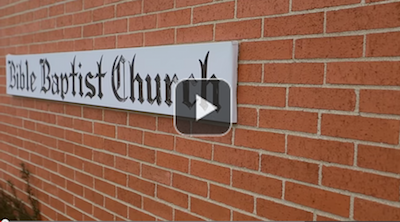MARCH 4, 2018
MARY ANOINTS JESUS’ FEET
INTRODUCTION:
1. Jesus’ greatest miracle, the raising of Lazarus from the dead, drew two very opposite responses from the Jews for whom the miracle was primarily intended.
a) Many who witnessed it believed on Him.
b) Others who witnessed it reported what was done to the Jewish leaders, who, like themselves, were hardened in their unbelief, and put out word that He must be taken, i.e. taken and put to death.
2. Jesus therefore removed Himself into the Judean city of Ephraim. Nothing is known about this city, only that our Lord continued there until the week of His passion.
3. The time had now come for His return but first He would come to Bethany, to the home of Mary, Martha, and Lazarus.
4. To off-set the horrible dishonor that was done to our Lord at the end of the previous chapter prompting His departure, this chapter begins with the high honor that was shown to Him upon His return, as He came again to Bethany before entering upon His great humiliation.
I. THE VISIT THAT JESUS PAID TO HIS FRIENDS AND THE KIND ENTERTAINMENT WHICH THEY GAVE HIM. (VERSES 1-3)
A. JESUS BLESSED HIS FRIENDS BY COMING TO BETHANY SIX DAYS BEFORE THE PASSOVER. (VERSE 1)
1. He would lodge in the home of Lazarus whom He had a few weeks before this raised for the dead.
2. He would spend His last Sabbath before His death with this family.
3. That He came up “six days before the Passover” is noted to indicate that this visit was a preface to the Passover He intended to celebrate.
a) He would celebrate it with His disciples with great desire.
b) But that celebration, like all before it was only typical of the true Passover, God’s Lamb who would soon be sacrificed. (I Cor. 5:7)
B. HE WAS GRACIOUSLY ENTERTAINED IN THE HOME OF HIS FRIENDS WHO MADE HIM A SUPPER. (VERSE 2)
1. “They,” meaning Mary, Martha, and Lazarus.
2. It appears that Martha, as was typical of her, was most involved in preparing and serving the meal.
a) Though a person of some quality herself, she did not think it below her to serve when Christ sat at the table.
b) Christ Himself taught us that service is a high honor; and that is especially true when Christ is the one we serve. (See Matt. 20:27, 28; 25:40)
3. Lazarus was not involved in that way, but as customary for men, he was seated with those being served.
a) This was purposely mentioned in order to show the reality of Lazarus’ resurrection. He was not a ghost or spirit. He had a real body with all of the wants and conditions of a body.
b) Thus, we are practically taught that though a man’s body die, it may yet live again.
c) J. C. Ryle remarks that this scene provides “a faint type of the Marriage Supper of the Lamb; Jesus Christ will be there; those believers who died and are raised again…will be there; and those who never died, but are found alive and believing when He comes, will be there. Then the number of the guests will be complete.”
4. Mary showed our Lord particular honor above the rest. (Verse 3)
a) This remarkable act of Mary, being so similar to what is recorded in Matt. 26 and Mark 14, which Jesus said would be related all over the world, certainly deserves our special attention. (Matt. 26:13; Mark 14:9)
b) This anointing is (in my opinion) the first of two which He received prior to His death. By comparing the various accounts, we find that:
(1) This anointing occurred 6 days before Passover, while that recorded in Matthew and mark was 2 days before.
(2) Here Mary anointed Jesus feet, while there the woman (who some believe was also Mary) anointed His head.
(3) This anointing was in the home of Mary, Martha, and Lazarus, while the other was in the house of Simon the Leper, and
(4) In this case, the waste was protested by Judas, but of the other apparently there were others besides Judas who complained. (Matt. 26:8; Mark 14:4)
c) Mary’s motive for what she did was evidently her strong and grateful love for her Lord and Savior.
(1) For what she had learned from Him for her own spiritual benefit.
(2) For what He had done for her and her family in restoring Lazarus to them.
(3) The depths of her gratitude to her Lord and the high honor she intended to bestow on Him is shown by the lavish profuseness with which she poured the entire contents of the very costly box of ointment on His feet.
d) Though, as commentators point out, it was customary to anoint the feet of weary travelers who came in as guests, there is obviously much that is indicated by Mary’s actions.
(1) It was the “beautiful feet” that had brought the hope of the Gospel to her door and into her home. (Rom. 10:15)
(2) It was at these beautiful feet that she sat delighted to hear her Master teach. (Luke 10:39)
(3) It was at Jesus’ feet that she would assume the most humble posture and spirit, even wiping His feet with her hair.
II. MARY’S ACTIONS WERE MET WITH DISAPPROVAL FROM JUDAS ISCARIOT, BUT RECEIVED GRATEFUL PRAISE AND COMMENDATIONS FROM THE LORD. (VERSES 4-8)
A. THE ONLY COMPLAINT CAME FROM ONE OF JESUS’ DISCIPLES. “THEN SAITH ONE OF HIS DISCIPLES, JUDAS ISCARIOT…” (VERSE 4)
1. This complainer, being one of the twelve, was one of their number, but not one of their nature.
a) It is possible for evil men to lurk in the disguise of a good profession.
b) It is sad when holy service is frowned upon and discouraged by those who ought, according to their profession, to be forward to encourage it.
c) Many a professing Christian cannot understand zeal of any sort for the honor of Christ.
(1) Any expenditure for sake of reaching the lost with the Gospel is seen as a waste.
(2) A life given to take the Gospel to the world is looked upon as senseless.
(3) Surely, to become a living sacrifice for Christ is not seen as reasonable (Rom. 12:1), but totally unreasonable.
d) We cannot allow the remarks of such persons to move us from “patient continuance in well-doing.”
2. Judas dressed his complaint in a pretense of concern for the poor. (Verse 5)
3. John here sets the record straight, inserting parenthetically, “This he said not because he cared for the poor, but because he was a thief…” (Verse 6)
a) Judas was treasurer of Christ’s group of disciples. This may be the reason why he was called “Iscariot,” which means bag-bearer.
b) Judas’ true character was not yet known to John at the time of this anointing, but obviously, by the time that John was writing this Gospel, it had become well known that Judas was not only a “thief” but a “traitor,” THE TRAITOR.
c) Judas’ question is a specimen of how wicked men will often try and depreciate a good action, especially in the matter of giving. They will suggest that something better might have been done.
d) Matthew Henry comments that coldness of love for Christ and secret contempt for actions done to His honor, when seen in professors of religion, are “sad presages of final apostasy.”
e) Judas made a big deal about 300 pence, when he was about to sell the Son of God for a fraction of that amount.
B. CHRIST DEFENDED AND JUSTIFIED WHAT MARY DID. (VERSES 7, 8)
1. “Let her alone.” He here intimated His acceptance of Mary’s kindness. Jesus will not have those censured or discouraged who sincerely seek to honor Him.
a) “Pardon her,” so it might be read. If a sincere act of love to Christ seems indiscreet or improper, excuse it for sake of its intended design.
b) Christ knows the heart motive, and is pleased with all sincere, though imperfect, expressions of love to Him.
2. He put a favorable construction on Mary’s kindness that none besides Himself would have imagined. “Against the day of my burying she has kept this.”
a) Our Lord Jesus thought much and often of His death and burial, which is now drawing very near.
b) Could anyone begrudge the use of the ointment used for the embalming of the dead, or complain about the cost, or consider it a waste.
c) Mary’s wonderful expression of love for Christ proved in God’s purpose to be more seasonable and more beautiful than she had foreseen.
3. Jesus gave a sufficient answer to Judas’ objection. (Verse 8; Deut. 15:11)
a) We have the poor always with us, and they are proper objects of Christian charity. (Notice, Jesus appears to take Judas’ reasoning at face value, though He certainly knew that he was not sincere in it.) (Verse 6)
b) We need wisdom when two duties come in competition, to know which has priority. In this case it is made clear. “Me you have not always.”
III. THERE WAS MUCH PUBLIC NOTICE TAKEN OF THIS SUPPER AT BETHANY. (VERSES 9-11)
A. MANY PEOPLE FLOCKED TO THE SCENE BECAUSE THEY KNEW THAT JESUS WAS THERE. (VSE. 9a)
1. He had lately retreated to a place near the wilderness where they could not find Him.
2. They came in droves to see Him whose name had been very much magnified by His latest miracle.
3. Though He was declared an outlaw by the authorities, they came not to seize Him, but to gratify their curiosity.
B. THEY CAME ALSO TO SEE LAZARUS WHO WAS RAISED FROM THE DEAD. (VERSE 9b)
1. Perhaps some came to have their faith confirmed.
2. Others may have come out of curiosity, to see a man that was brought back from the dead.
3. Maybe some were eager to quiz him about his experience; what he saw; what it was like. Far better had they come to hear Christ. (Luke 16:31)
C. THE CHIEF PRIESTS WERE FILLED WITH INDIGNATION, SEEING WHAT EFFECT THIS HAD ON THE PEOPLE. (VERSES 10, 11)
1. They had done all they could to alienate the people from Christ and stir up hatred against Him, but many of the Jews were overpowered by the miracle. Now seeing the living evidence of the reality of it, many who may have entertained some doubt were persuaded. They were seeing the very thing they had feared coming to pass. (Verse 48a)
2. How absurd and unreasonable was their proposed remedy to the problem. “But the chief priests consulted that they might put Lazarus also to death.” (Verse 10)
a) Their reasoning was totally absurd and ridiculous. “Because…of him many of the Jews believed on Jesus.”
b) We see how irrational and desperate wicked men filled with hate can become. How could putting Lazarus to death possibly prevent what was happening?
c) Nothing is so unreasonable as the bitter hatred that wicked men have toward Christ and the Gospel.
(1) It would put Him to death again if that were possible.
(2) It would pull God down from His throne if it could.
(3) It would also put to death even those whom He has called from spiritual death to spiritual life who bear witness to His saving, regenerating power. (John 5:25)


